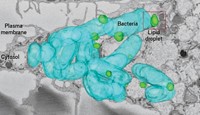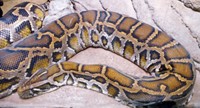Advertisement
Grab your lab coat. Let's get started
Welcome!
Welcome!
Create an account below to get 6 C&EN articles per month, receive newsletters and more - all free.
It seems this is your first time logging in online. Please enter the following information to continue.
As an ACS member you automatically get access to this site. All we need is few more details to create your reading experience.
Not you? Sign in with a different account.
Not you? Sign in with a different account.
ERROR 1
ERROR 1
ERROR 2
ERROR 2
ERROR 2
ERROR 2
ERROR 2
Password and Confirm password must match.
If you have an ACS member number, please enter it here so we can link this account to your membership. (optional)
ERROR 2
ACS values your privacy. By submitting your information, you are gaining access to C&EN and subscribing to our weekly newsletter. We use the information you provide to make your reading experience better, and we will never sell your data to third party members.
Proteomics
Reprograming wasp venom to make antimicrobials
Synthetic peptides can keep their bug-fighting properties but lose the sting
by Laura Howes
July 30, 2023
| A version of this story appeared in
Volume 101, Issue 25

In the hunt for new antibiotics, people have looked in myriad locations. At the University of Pennsylvania, Cesar de la Fuente’s team goes hunting in the protein world. The researchers aim to find small proteins around 8–50 amino acids long with antimicrobial properties because peptide-based antimicrobials are thought to be less likely to induce resistance than small molecules. In the team’s latest published research, the researchers reprogrammed proteins in wasp venom to create antimicrobial peptides (AMPs) that fight bacteria without also hurting host cells, at least in mice (Cell Rep. Phys. Sci. 2023, DOI: 10.1016/j.xcrp.2023.101459).
The starting point was the venom of the solitary eumenine wasp Eumenes micado. When provoked, their little stingers can deliver a painful cocktail of proteins, but de la Fuente’s team wasn’t looking for pain-producing compounds. Andreia Boaro and Lucía Ageitos, who led the work, took two short venom toxins and, by making different amino acid substitutions, upped the antimicrobial activity and screened out the cytotoxic properties. The synthetic peptides were tested against Gram-negative bacteria in test tubes and in an infected mouse model. While these AMPs won’t become drugs, they could be used as scaffolds for further study, the researchers write in their paper.





Join the conversation
Contact the reporter
Submit a Letter to the Editor for publication
Engage with us on Twitter